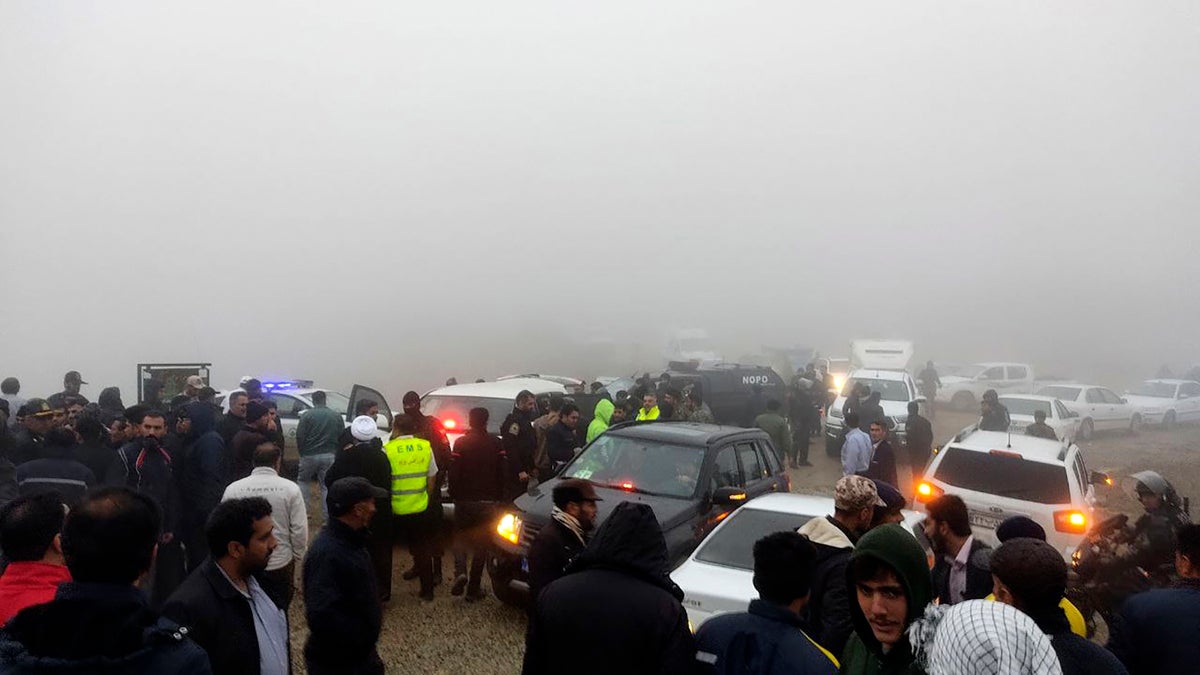
Rescuers have found a helicopter that was carrying Iranian President Ebrahim Raisi, the country’s foreign minister and other officials that had apparently crashed in the mountainous northwest reaches of Iran the day before, though “no sign of life” was detected, state media reported.
As the sun rose Monday, rescuers saw the helicopter from a distance of some 2 kilometers (1.25 miles), the head of the Iranian Red Crescent Society, Pir Hossein Kolivand, told state media. He did not elaborate and the officials had been missing at that point by over 12 hours.
Raisi was traveling in Iran’s East Azerbaijan province. State TV said what it called a “hard landing” happened near Jolfa, a city on the border with the nation of Azerbaijan, some 600 kilometers (375 miles) northwest of the Iranian capital, Tehran. Later, state TV put it farther east near the village of Uzi, but details remained contradictory.
With Raisi were Iran’s Foreign Minister Hossein Amirabdollahian, the governor of Iran’s East Azerbaijan province and other officials and bodyguards, the state-run IRNA news agency reported. One local government official used the word “crash,” but others referred to either a “hard landing” or an “incident.”
Footage released by the IRNA early Monday showed what the agency described as the crash site, across a steep valley in a green mountain range. Soldiers speaking in the local Azeri language said: “There it is, we found it.” Shortly after, state TV in an on-screen scrolling text said: “There is no sign of life from people on board.”
Currently:
— ‘No sign of life’ at crash site of helicopter carrying Iran’s president, others
— What do we know so far about the mysterious crash of the helicopter carrying Iran’s president?
— Helicopter crash could reverberate across the Middle East, where Iran’s influence runs wide and deep
— Who is Ebrahim Raisi, Iran’s president whose helicopter suffered a ‘hard landing’ in foggy weather?
Follow AP’s coverage of Iran: https://apnews.com/hub/iran
Here's the latest:
‘NO SIGN OF LIFE’ AT HELICOPTER CRASH SITE: IRANIAN STATE TV
DUBAI, United Arab Emirates — Rescuers have found a helicopter that was carrying Iranian President Ebrahim Raisi, the country’s foreign minister and other officials that had apparently crashed in the mountainous northwest reaches of Iran the day before, though “no sign of life” was detected, state media reported.
As the sun rose Monday, rescuers saw the helicopter from a distance of some 2 kilometers (1.25 miles), the head of the Iranian Red Crescent Society, Pir Hossein Kolivand, told state media. He did not elaborate and the officials had been missing at that point by over 12 hours.
Raisi was traveling in Iran’s East Azerbaijan province. State TV said what it called a “hard landing” happened near Jolfa, a city on the border with the nation of Azerbaijan, some 600 kilometers (375 miles) northwest of the Iranian capital, Tehran. Later, state TV put it farther east near the village of Uzi, but details remained contradictory.
With Raisi were Iran’s Foreign Minister Hossein Amirabdollahian, the governor of Iran’s East Azerbaijan province and other officials and bodyguards, the state-run IRNA news agency reported. One local government official used the word “crash,” but others referred to either a “hard landing” or an “incident.”
Footage released by the IRNA early Monday showed what the agency described as the crash site, across a steep valley in a green mountain range. Soldiers speaking in the local Azeri language said: “There it is, we found it.”
Shortly after, state TV in an on-screen scrolling text said: “There is no sign of life from people on board.” It did not elaborate, but the semiofficial Tasnim news agency showed rescuers using a small drone to fly over the site, with them speaking among themselves saying the same thing.
HELICOPTER CRASH COULD REVERBERATE ACROSS THE MIDDLE EAST
JERUSALEM — The crash of a helicopter carrying Iranian President Ebrahim Raisi, the country’s foreign minister and other officials is likely to reverberate across the Middle East.
That’s because Iran has spent decades supporting armed groups in Lebanon, Syria, Iraq, Yemen and the Palestinian territories that allow it to project power and potentially deter attacks from the United States or Israel, the sworn enemies of its 1979 Islamic Revolution.
Tensions have never been higher than they were last month, when Iran under Raisi and Supreme Leader Ayatollah Ali Khamenei launched hundreds of drones and ballistic missiles at Israel in response to an airstrike on an Iranian Consulate in Syria that killed two Iranian generals and five officers.
Israel, with the help of the U.S., Britain, Jordan and others, intercepted nearly all the projectiles. In response, Israel apparently launched its own strike against an air defense radar system in the Iranian city of Isfahan, causing no casualties but sending an unmistakable message.
The sides have waged a shadow war of covert operations and cyberattacks for years, but the exchange of fire in April was their first direct military confrontation.







